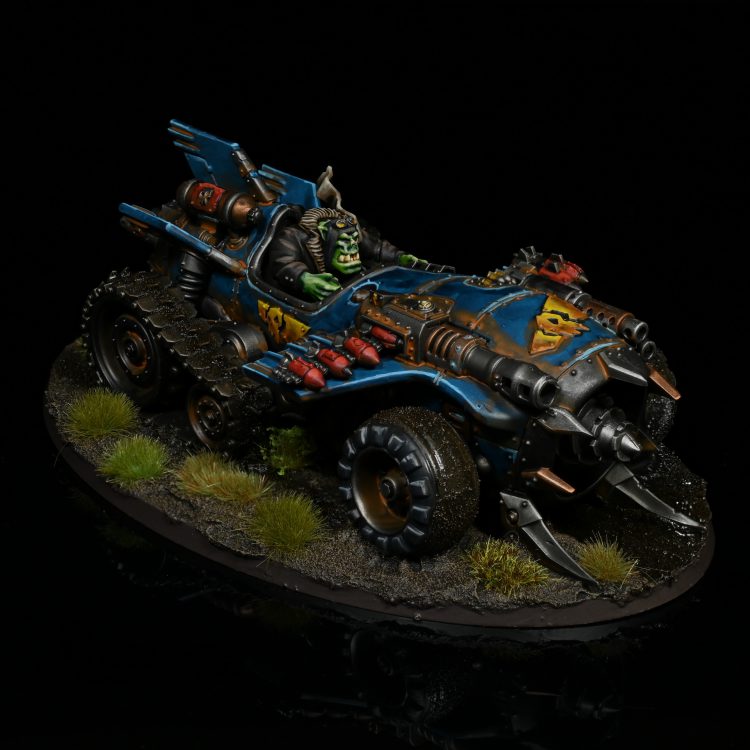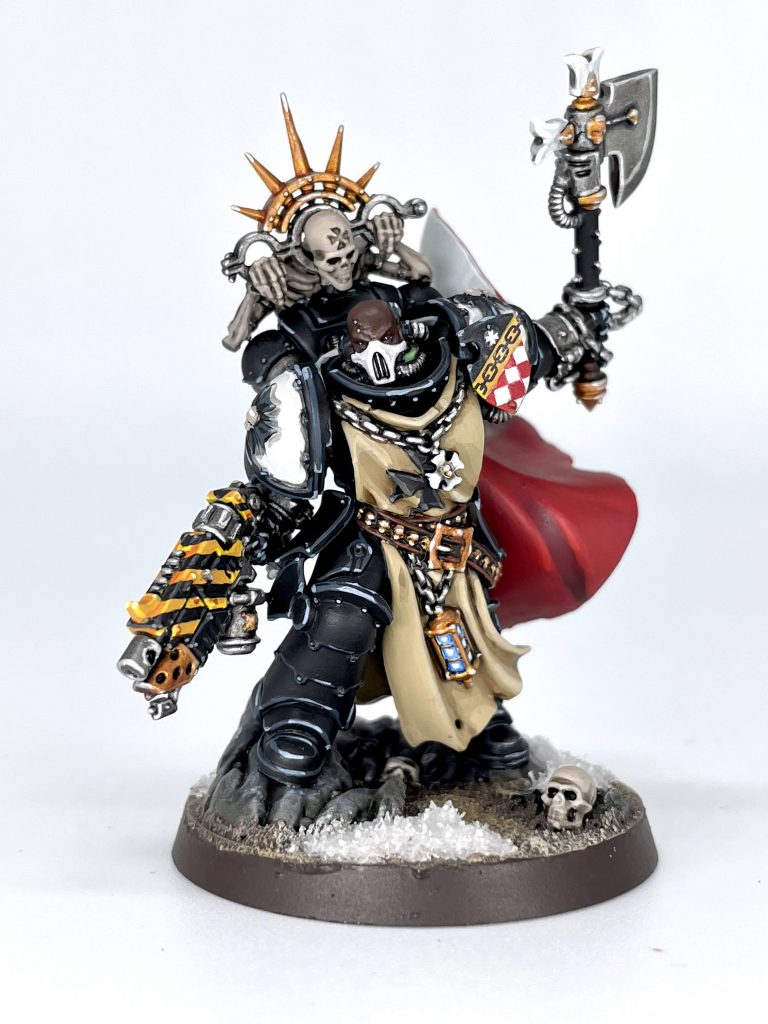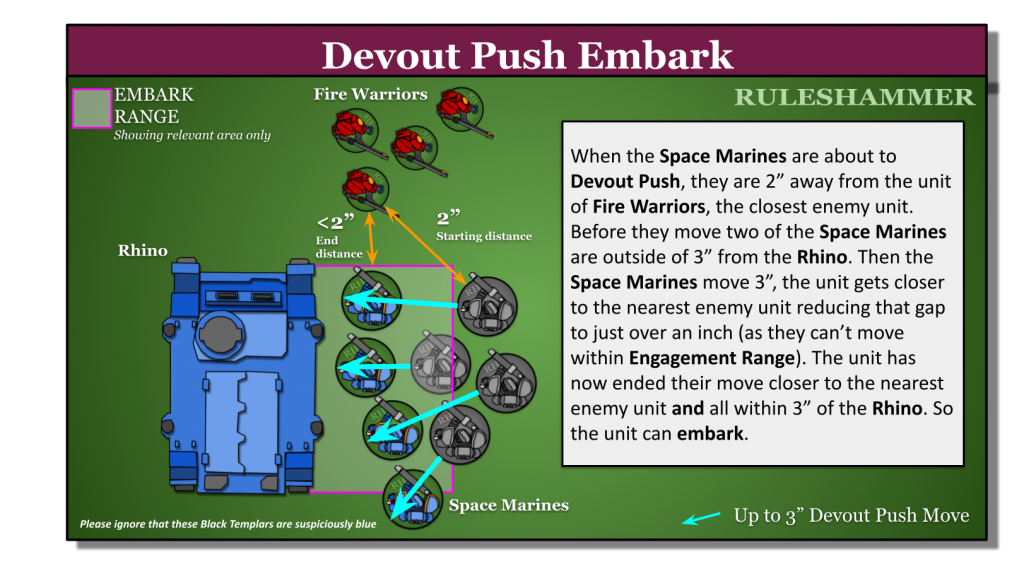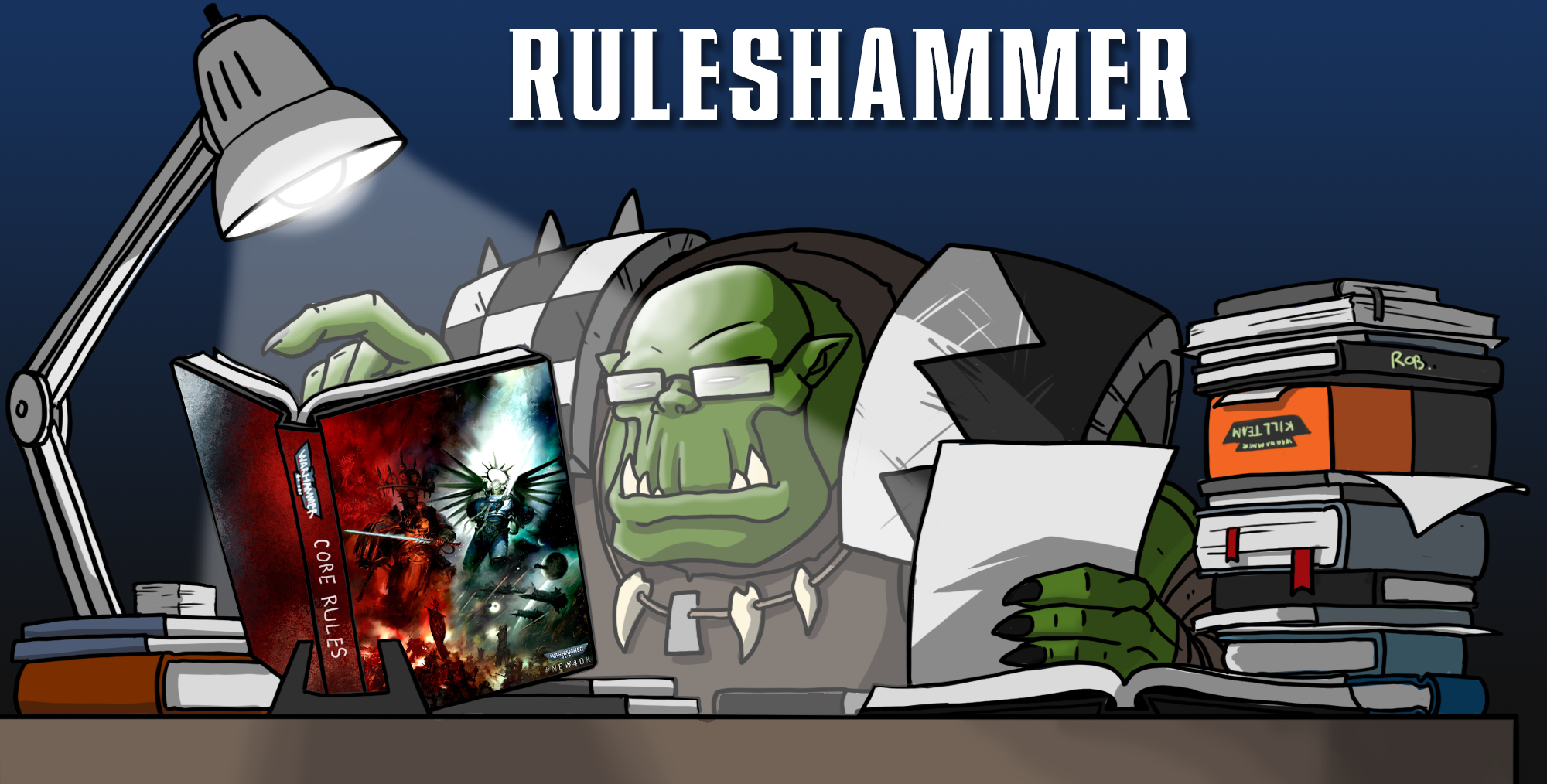Welcome to Ruleshammer! This week we’re answering more of your submitted questions from the last week.
Orks: Can you Careen off the board with an aircraft?
Q: What happens if an Ork plane uses the “careen” Stratagem and ends up off the board/with part of its base off the board?
“This can’t happen” is essentially is the answer here most of the time, as a normal move doesn’t allow you to end the turn over the battlefield edge. Careen just lets a model do a normal move of up to 6″.
Careen: Use this Stratagem in any phase, when an ORKS VEHICLE model in your army that is not within Engagement Range of any enemy models is destroyed and explodes. That model can make a Normal Move of up to 6″ before resolving the explosion. If that VEHICLE is a WAGON or TITANIC model, this Stratagem costs 2CP; otherwise, it costs 1CP.
It’s probably important to note that Aircraft’s minimum move rules ONLY apply in their movement phase.
Aircraft models typically have a Move characteristic consisting of two values. The first is the model’s minimum Move characteristic – in its Movement phase, all parts of the model’s base must end the move at least that far from where they started.
So unless the Aircraft manages to die during its own movement phase there’s no conflict between the Aircraft making a move that doesn’t take it off the board, and their minimum move. This also means that the rules for Strategic Reserves for if a flyer can’t make it minimum move don’t apply. However the Supersonic rule would still limit the amount the model can turn as that’s linked to making a Normal move, not moving in the movement phase.
Supersonic: Each time this model makes a Normal Move, Advances or Falls Back, first pivot it on the spot up to 90° (this does not contribute to how far the model moves), then move the model straight forwards. It cannot pivot again after the initial pivot.
If the aircraft can’t rotate sufficient to move then a move of 0″ is still a move of up to 6″ and it would explode where it was, which would be a bit of a waste of the 1CP to be honest.
Update: It’s not impossible a for a flyer to be destroyed in their own movement phase, for instance by arriving via Strategic Reserves and then killed by a unit using Auspex Scan. However reinforcement units have a few rules that mean that even if they were the subject of Careen it wouldn’t result in a move let alone one that left the board.
Reinforcement units cannot make a Normal Move, Advance, Fall Back or Remain Stationary in the turn they arrive for any reason, but they can otherwise act normally (shoot, charge, fight etc.) . Models in units that arrived as Reinforcements count as having moved a distance in inches equal to their Move (M) characteristic in this Movement phase. If models in the unit have a minimum Move characteristic, those models count as having moved a distance in inches equal to their maximum Move characteristic.- Core PDF Pg11
So not only can reinforcements units not move, meaning Careen would do nothing for them, the Aircraft is also considered to have moved about the minimum in this phase just for coming in. So even if they could move, they wouldn’t trigger their minimum move rules.

Orks: Who is affected by Cloud of Smoke?
Q: Does ‘Cloud of Smoke’ apply to the Speed Freeks unit you select for the Stratagem? (i.e Squig Buggy is selected and gives Scrap jets nearby -1 to hit, does this also apply to squig buggy–technically it is a friendly unit within 6 inches of itself 🙂 Thanks!
CLOUD OF SMOKE
Use this Stratagem at the start of your opponent’s Shooting phase. Select one SPEED FREEKS VEHICLE unit from your army. Until the end of the phase, while a friendly SPEED FREEKS VEHICLE unit is within 6″ of the selected unit, each time a ranged attack targets that unit, subtract 1 from that attack’s hit roll.
So a little frustratingly here this is sort of an aura, and it really should have given the unit an ability that was clearly marked as such in my opinion. Personally I would still play that it does give the unit an Aura ability, which would means the effect can be disabled by aura-disabling abilities. However to answer the question being asked here, units are considered to be within X” of themselves. For an ability to exclude the unit itself it would usually say “while another friendly”.
I’d recommend this stratagem be discussed pre-game, especially if the enemy has any aura-ignoring abilities. It in my opinion meets the aura definition.
Aura Abilities
Some abilities affect models or units in a given range – these are aura abilities. A model with an aura ability is always within range of its effect. – Core PDF Pg7
So with that in mind it probably worth checking you both agree on what the ability is and how it interacts with other rules.
Note: I know Orks is a 9th edition codex and the Aura tag is used, but GW have not been entirely consistent with the tag. For instance there are currently half of the 9th books where Body Guard is a tagged aura, while in the other half of books it is not, despite having the exact same wording. The tag is not part of the definition in the core rule; it was meant to be a convenient thing and has caused plenty of arguments instead.

Black Templars: Devout Push and Embarking
Q: Hello. We had a strong debate about the new devote push ability. During the fight phase à black templar unit can do a Normal Move to the closest enemy or the closest objective. May the unit use this ability to embark in a transport ?
Thank you your help!
So this one seems pretty odd both before and after the explanation, like it’s not in the spirit of the rule as such but yes a unit that makes a normal move with devout push can, rules as written, embark. The reason this works is because of when embarking happens. The devout push stratagem says this
If the unit is not with Engagement Range of an enemy unit, make a Normal Move of up to 3″ with that unit. It must end this move closer to the closest enemy unit or closer to the closest objective marker.
So you move the unit and they must end that move closer to the enemy or an objective. So you check they’ve done that when the move has ended. Then the embark rules are used.
EMBARK
If a unit makes a Normal Move, an Advance or it Falls Back, and every model in that unit ends that move within 3″ of a friendly Transport model they can embark within it. . A unit cannot embark within a Transport model that is within Engagement Range of enemy models, and it cannot embark if it has already disembarked from a Transport model in the same phase
So if a unit has ended the move both closer to the enemy or an objective, and also so that every model is within 3″ then they can embark. This happens after satisfying the conditions of the move required by Devout Push. Also because disembarking happens in the movement phase (other than when a transport is destroyed in the fight phase) a unit can disembark then, and then use Devout Push to embark in the fight phase.
One other thing to note about Devout push that makes this far more likely to be feasible is that unline a pile in move the rule only requires that the “unit” end the move closer to the closest enemy unit or closest objective marker. Rather than requiring every model end the move closer. So long as the distance between one model in the unit and one of the required locations is less than the minimum measured before you the move then this is allowed.
 Have any questions or feedback? Got a rules question you want answered? Drop us a note in the comments below, ask a question in our Ruleshammer form, or head over to r/ruleshammer to discuss.
Have any questions or feedback? Got a rules question you want answered? Drop us a note in the comments below, ask a question in our Ruleshammer form, or head over to r/ruleshammer to discuss.


